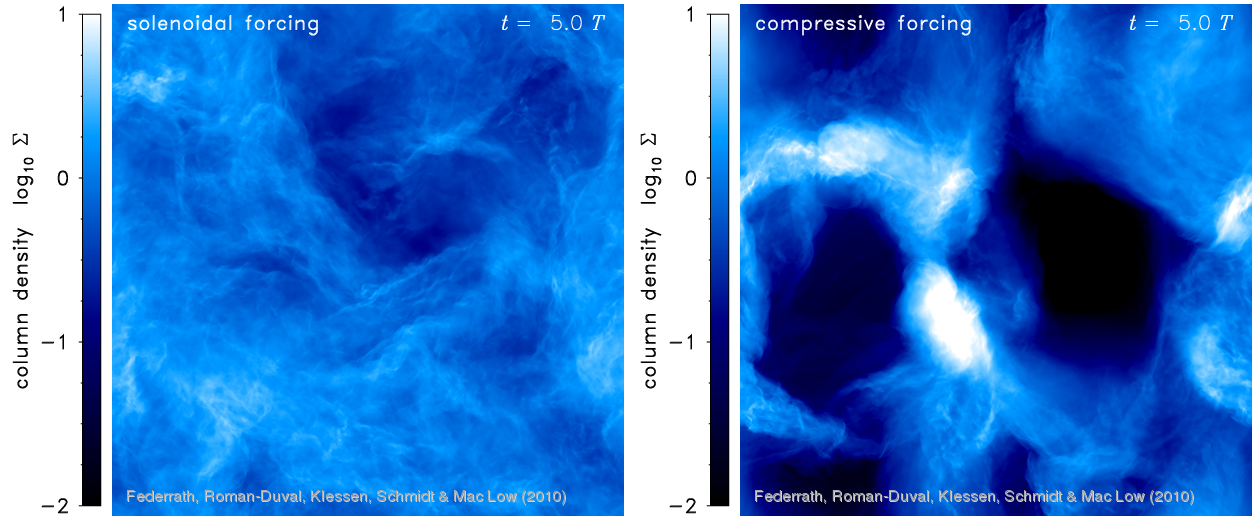Christoph Federrath's PhD Thesis [ 13MB pdf ]
The formation of molecular clouds and stars by turbulent compression and collapse
Abstract
The goal of my PhD thesis was to improve our understanding of the role of interstellar turbulence in star formation. In particular, the mechanism of turbulence energy injection, the turbulence forcing, is investigated with hydrodynamical simulations. In a systematic comparison, I study the two limiting cases of turbulence forcing: solenoidal (divergence-free) forcing and compressive (curl-free) forcing. I show that these two cases yield significantly different gas density and velocity statistics. The fractal structure of the gas and the turbulent density probability distribution function (PDF) are explored in detail. I find that compressive forcing yields a three times higher standard deviation of the roughly Gaussian density PDF. I discuss the impact of this result on analytic models of star formation. A detailed comparison with observational data reveals that different observed regions show evidence of different mixtures of compressive and solenoidal forcing, with more compressive forcing occurring primarily in swept-up shells. To follow the gravitational collapse of dense gas in numerical simulations, I implemented accreting sink particles in the adaptive mesh refinement code FLASH. Using sink particles, I show that compressive forcing yields star formation rates more than one order of magnitude higher than solenoidal forcing, consistent with analytic models.
The figure shows the column density of interstellar gas in two hydrodynamical numerical experiments of driven supersonic turbulence. The left image shows the result for solenoidal forcing, while the right image shows the case of compressive forcing. The most important result of this study was that compressive turbulence forcing leads to significantly higher density contrasts. I showed that the star formation rate of compressive forcing is more than ten times higher than the star formation rate of solenoidal forcing.

 Home
Home
